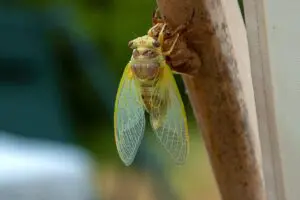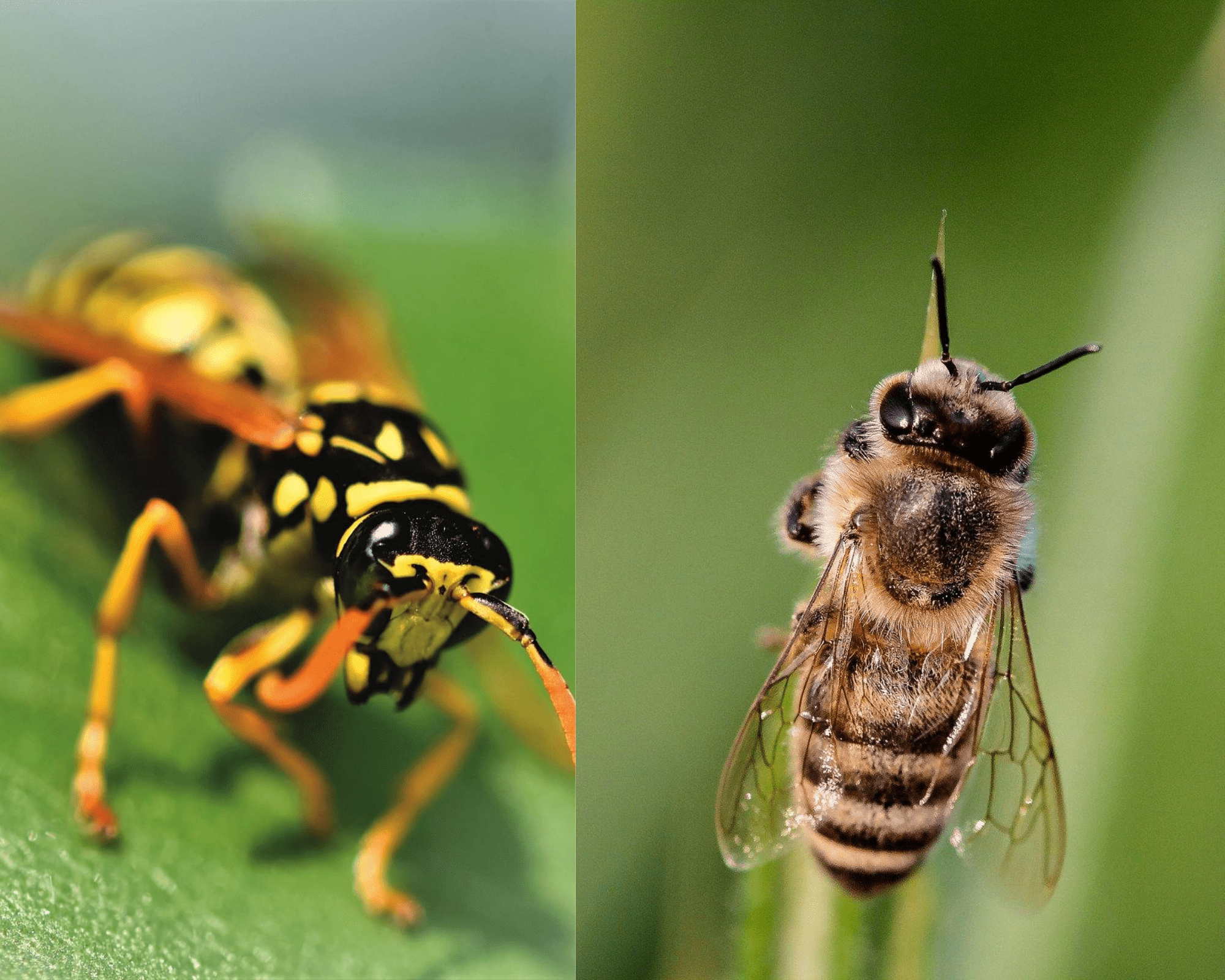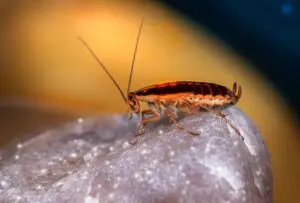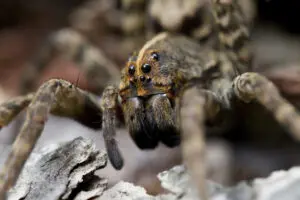

Bees and wasps are both important pollinators. It can be difficult to tell the difference between the two, but it is important to know which is which when dealing with them. This guide highlights the key differences between bees and wasps, and identifies some of the most commonly encountered types of each.
Difference
Fundamentally, wasps and bees are quite similar; they are both stinging insects, their nesting habits are comparable, and some wasp and bee species even look like each other. So what’s the difference between bees and wasps? Well, there are a number of ways to identify a wasp vs a bee.
The best way to tell the difference between bees and wasps is by their appearance. Bees have rounder bodies and their head, thorax, and abdomen seem to meld together. Wasps, on the other hand, have narrower bodies with thin waists, and their bodies are clearly segmented. Bees have noticeable hair on their bodies, so they look almost furry. Wasps also have hairs on their bodies, but the hairs are so small that they are not visible to the naked eye. This causes wasps to have a shiny appearance. Bees have flat, hairy legs, which they use to carry pollen from one flower to the next. Wasps’ legs are cylindrical and hairless. While flying, bees have their legs tucked away, and wasps let their legs hang down.
Bees and wasps can also be differentiated by their stings and stingers. Bees have barbed stingers, which they lose when they sting. The stinger gets stuck in the victim and pulled out of the bee, ultimately killing the bee. Wasps’ stingers are not barbed, so they do not lose them. This means that they can sting multiple times. Given this, the presence of a stinger in a sting site is a sure sign that the culprit was a bee. Conversely, the absence of one indicates a wasp sting. Typically, wasps are more aggressive than bees, and are more likely to attack.
Wasps
Wasps play a role in pollination, and are not typically aggressive unless threatened. However, they are generally more aggressive than bees, and caution should be exercised around nests. Nests on and around homes and businesses should be handled right away, as an infestation could pose significant issues.
Hornets can be identified by their waists, as their waists are slightly thicker than those of other wasps. Many people ask what the difference between a hornet and a wasp is. Technically, there is no difference since hornets are a type of wasp. However, not all wasps are hornets, so the two terms are not actually interchangeable. The only two hornet species that have established populations in the United States are the European hornet and the bald faced hornet. European hornets are about 1 to 1-½ inches long. Their thoraxes are black and reddish-brown. Their abdomens are black on the half that is attached to the thorax, and yellow on the other half. The yellow half has rows of black teardrop shapes. Bald faced hornets are about 1 inch in length. They are black with white markings, and their faces are mostly white. Technically, Bald faced hornets are more closely related to yellow jackets than they are to other hornets, but they are called hornets because of their size and nesting habits.
Hornets are social insects, which means they live in colonies and build nests large enough to house an entire colony. Their nests are constructed with a paper-like material, which is made out of chewed up wood fibers, and they have one entry hole. Hornets typically build their nests in high places, like attics, sheds, overhangs, treetops, hollow tree trunks, and almost anywhere else that is raised off of the ground. Occasionally, hornets have been known to nest in abandoned rodent burrows underground, but these nests are less common than aerial nests.
Mud Daubers grow to be between ½ and 1 inch long, and they have a characteristically long and narrow waist. They are typically black, metallic blue, or black and yellow in color. Mud daubers are solitary insects, meaning they live individually rather than in a colony. Multiple females may nest in the same general area, but none will nest together, and each female builds her own nest. Their nests are made of mud and consist of multiple side-by-side tubes, each about 1 inch long. The tubes are brood chambers and are used for raising young. Nests are typically high up, in areas like eaves, ceilings, attics, barns, and sheds.
Paper Wasps grow to be between ¾ and 1 inch long. Their bodies are generally either reddish-brown or brown with yellow markings, and their wings are smoky black. They are social, so they build nests large enough for their whole colony. Paper wasps build their nests out of the same paper-like material as hornets, and their nests tend to resemble an upside-down umbrella. They usually build their nests in high areas, like attics, eaves, tree branches, door frames, and other elevated locations.
Yellow Jackets only grow to be between 10 and 16 mm in length. Most yellow jackets have yellow and black bands on their abdomens, but some have coloring that is closer to white than it is to yellow. Yellow jackets and sweat bees are often mistaken for one another, but yellow jackets are decidedly more dangerous than sweat bees. They can be told apart by their size and coloring- sweat bees are smaller and have a metallic appearance that yellow jackets lack. Yellow jackets are social, and their nests are made of the same material as hornet and paper wasp nests. Many yellow jackets build their nests on or near the ground, in places like fallen logs or plant roots. Aerial nests can be found in eaves, rafters, bushes, trees, and other protected areas.
Bees
Bees are some of the most important pollinators, and are generally not aggressive. Their declining populations are bad news for ecosystems everywhere, so nests found in the wild should be left alone. That being said, any nests on or around a home or business can cause problems and should be handled as soon as possible. There are more than 300 types of bees in New Jersey, as well as in Florida. The following are some of the most common bee species.
Bumblebees are usually between ¼ and 1 inch long. They have black and yellow stripes, and are hairy all over. Bumblebees are social, and their nests often look like debris piles due to the materials they are lined with, including animal fur and leaves. Bumblebees tend to build their nests near the ground in areas like wood piles, compost piles, and dead leaf piles. Occasionally, bumblebees will build aerial nests in places like eaves or attics.
Carpenter bees are typically about 1 inch long, and are black and yellow in color. They look somewhat like bumblebees, but their abdomens are shiny, hairless, and all black. Females have all black faces, and males have all yellow faces. Carpenter bees are solitary insects, and they build their individual nests in softwood. Their nests are made up of long, segmented tunnels. Some of the more popular locations for carpenter bee nests are old trees, porches, and buildings constructed with softwood. Florida carpenter bees are most active from February to October, while New Jersey species are most active between April and June.
Honey Bees are typically about 15 mm long. They are mustard yellow and brown in color, and they have hair on most of their bodies, even on their eyes! Honey bees are one of the few types of bees that are social. They construct their hives with a waxy substance, and their hives have the classic honeycomb appearance. Honey bees build aerial nests in protected places like tree cavities and eaves. They prefer to live near areas with abundant plant populations, like gardens, meadows, and orchards.
Mining Bees, sometimes called chimney bees, usually grow to be between 12 and 17 mm long. There are many species of mining bees, some having bright colors and others having more drab colors. Many species are reddish-gold in color. Some species are yellow and black in color, and are sometimes mistaken for bumblebees. Mining bees are solitary and build their individual nests underground. Each female will dig a tunnel a few inches into the ground. Then, she will dig multiple brood chambers off of the original tunnel. From the surface, the nest will look like a hole surrounded by loose dirt. Mining bee nests are often mistaken for anthills or earthworm mounds.
Sweat Bees typically only grow to be ¾ inch long and they have slender bodies. In terms of color, they are either bright metallic green or brownish-black with bands of light colored hair on their abdomens. Sweat bees are attracted to the salty components of human sweat, which is where they get their name. Sweat bees do have stingers, but they don’t usually sting unless they are disturbed, for instance if they get pinched in places somewhere like the back of the knee. Sweat bee stings look like small welts that may be painful, irritated, or itchy. Sweat bees are solitary and usually build their nests underground in sunny, dry areas, sometimes occupying abandoned rodent burrows. Occasionally they will also build their nests in softwood.
Mason bees are a type of solitary bee that are important pollinators of many fruits, vegetables, and flowering plants. They are generally smaller than honeybees and are not aggressive, making them safe to have around homes and gardens. They are active in the spring and early summer, when they emerge from their nests to feed on nectar and collect pollen for their young. They are efficient pollinators because they are able to carry large amounts of pollen due to their hairy bodies, and they visit more flowers than honeybees do.
Take-Away
Bees and wasps each have their own significance in the process of pollination, and their nests should be left alone if they are in remote areas. If their nests are on or near a home or business, though, they should be dealt with before they can cause any real harm. If you have any questions about wasps or bees on your property, visit Excel’s wasp and bee FAQ pages, or call one of our experts today.






